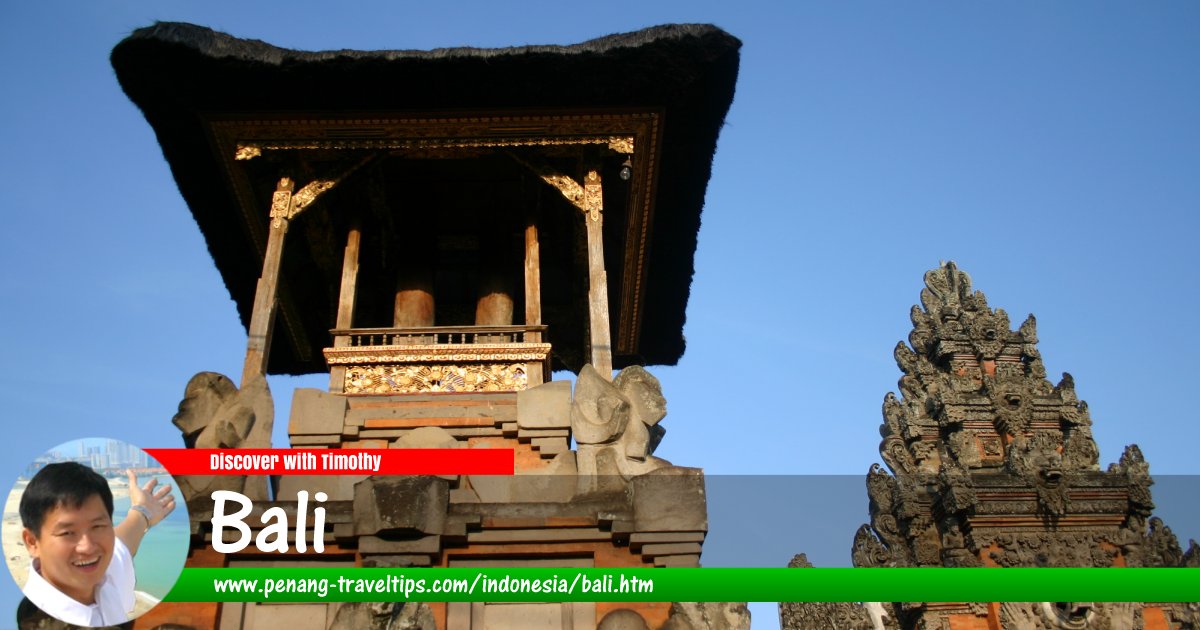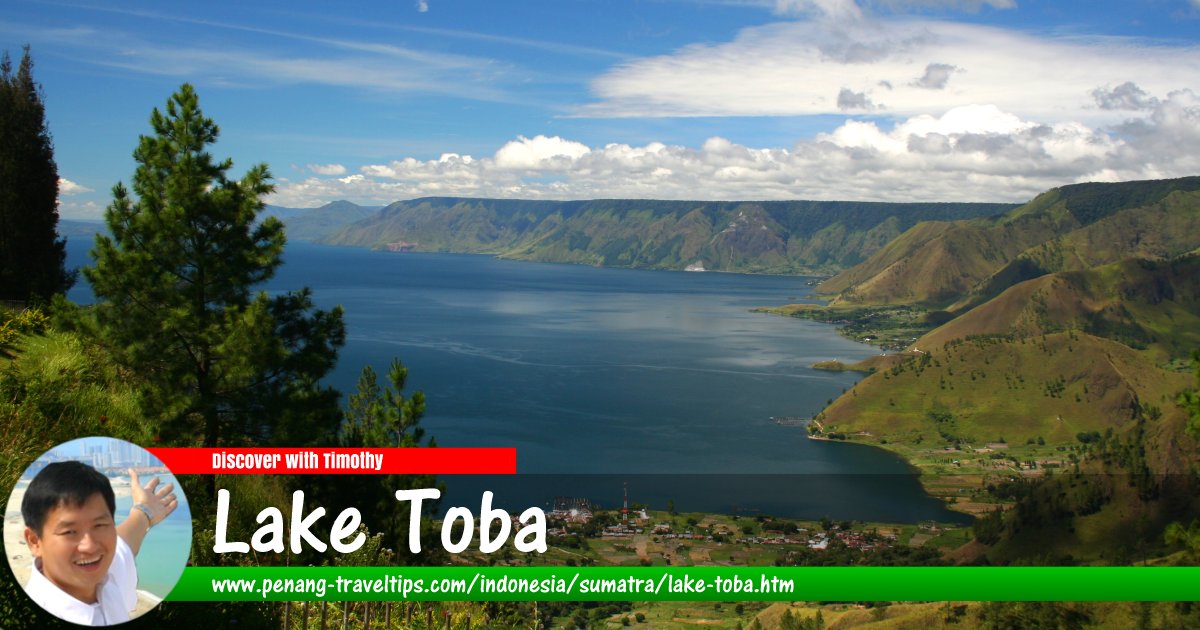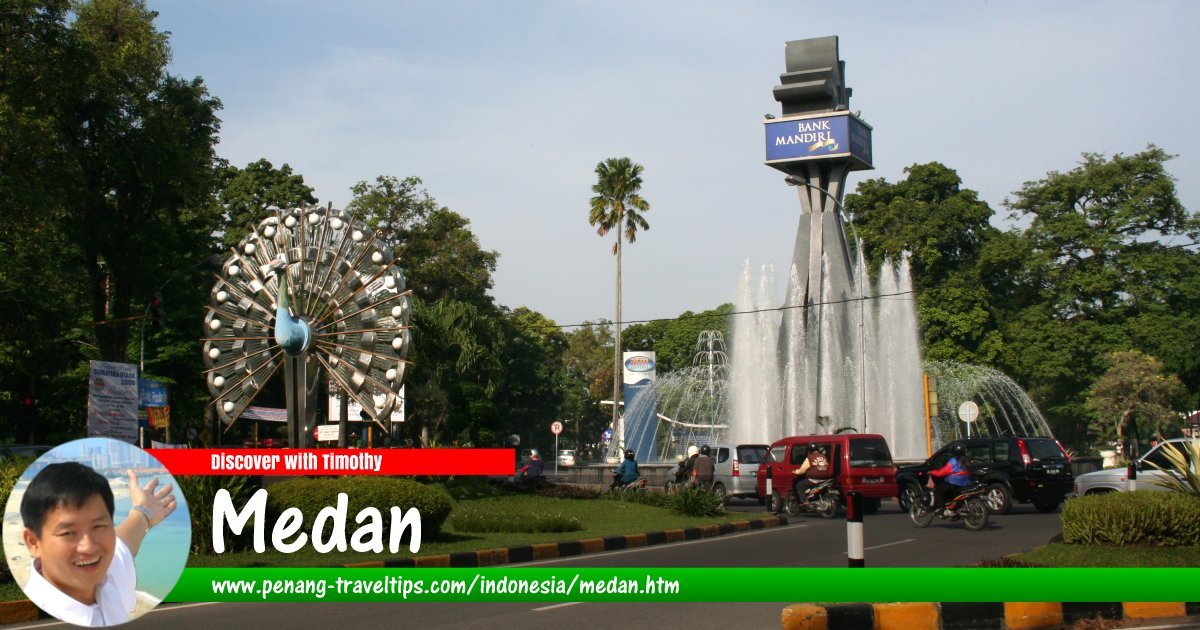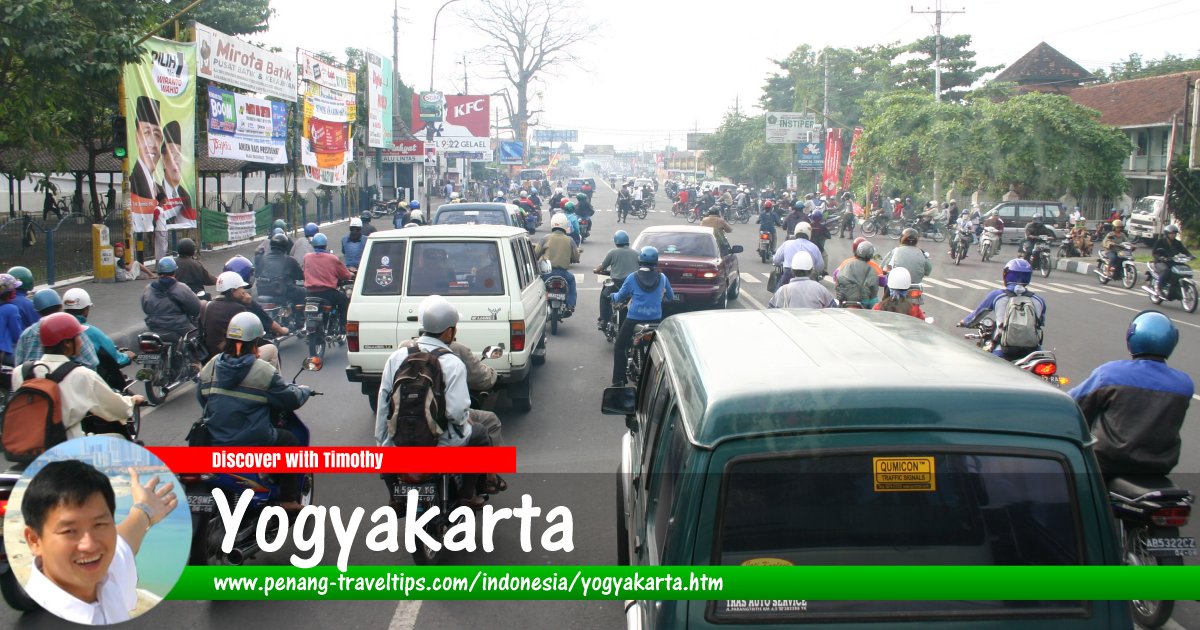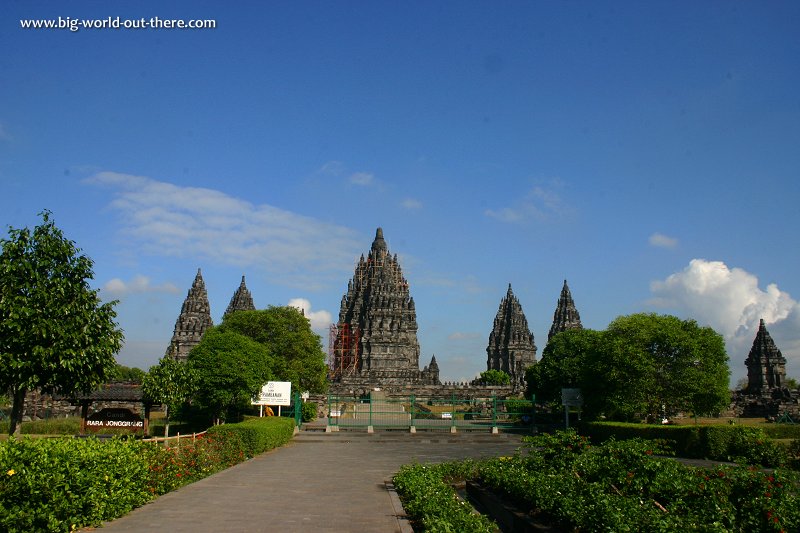 The Hindu temple complex of Loro Jonggrang in Prambanan (22 June, 2004)
The Hindu temple complex of Loro Jonggrang in Prambanan (22 June, 2004)
Prambanan is the ruins of a Hindu temple complex located 17 km east of Yogyakarta, along the Yogya-Solo highway. It is one of the two World Heritage Sites in Yogyakarta. As it is sitting on a volcanic plain, the Prambanan complex is actually vulnerable to earthquakes as well as volcanic eruptions.
Together with a small group of AsiaExplorers members, I had the privilege of Prambanan on a lovely day in July. I am pleased to share with you the photographs and details so that, whether you are contemplating a visit there, or simply online, you will benefit from the details I have researched.
World Heritage Site Inscription Details
Location: S7 45 08.0 E110 29 30.0Inscription Year: 1991
Type of Site: Cultural
Inscription Criteria: I, IV
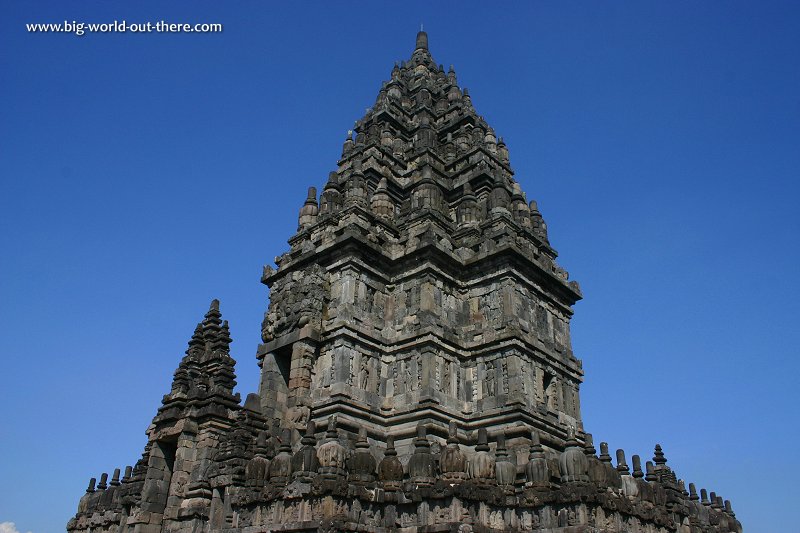 One of the restored candi at Prambanan (22 June, 2004)
One of the restored candi at Prambanan (22 June, 2004)
Prambanan was completed around 856 AD, to commemorate the victory of Rakai Pikatan, of the Sanjaya Dynasty, over Balaputra, the ruler of the Sailendra Dynasty. (The Sailendra Dynasty is the one attributed for the construction of Borobudur, so the two monuments were built no more than a century apart - however Borobudur is a Buddhist monument while Prambanan is Hindu.)
Balaputra fled to Sumatra, where he became the ruler of the Srivijaya empire (the same empire that eventually produced Parameswara, the Sumatran prince who established Malacca.
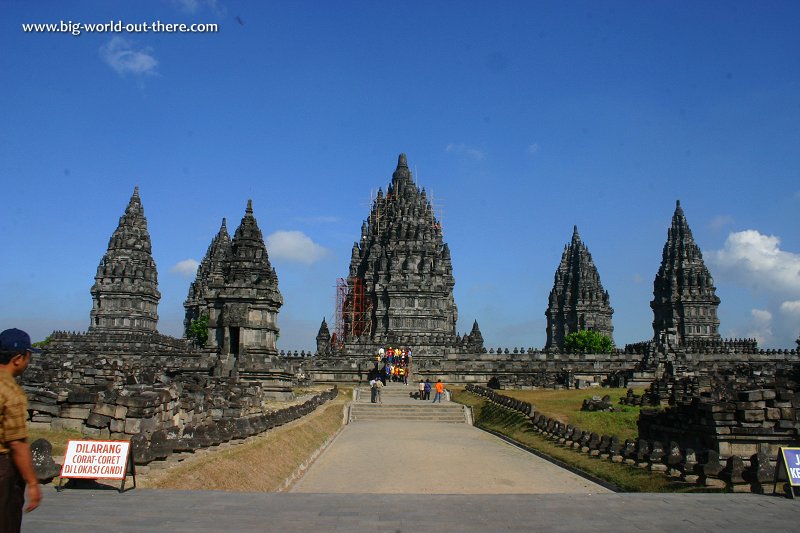 View of the Hindu temple complex from the east (22 June, 2004)
View of the Hindu temple complex from the east (22 June, 2004)
Like Borobudur, Prambanan was deserted within a few years of its completion. Archaeological speculation attributed the eruption of Gunung Merapi in 1006AD as the likely reason for the civilisation to come to such an abrupt halt. The eruption covered the region with such a heavy blanket of volcanic ash that it buried the monuments and caused widespread famine, compelling the population to move elsewhere.
The Prambanan complex consists of eight main buildings. These are Hindu sphire-shaped shrines called candi. The three largest ones are arranged from north to south, and faces the east. The biggest and most magnificent is the middle candi, which rises to a height of 47 m (155ft). This is Candi Siva Mahadeva, dedicated to the Hindu deity Siva. Flanking it are slightly smaller shrines, Candi Vishnu to the north and Candi Brahma to the south.
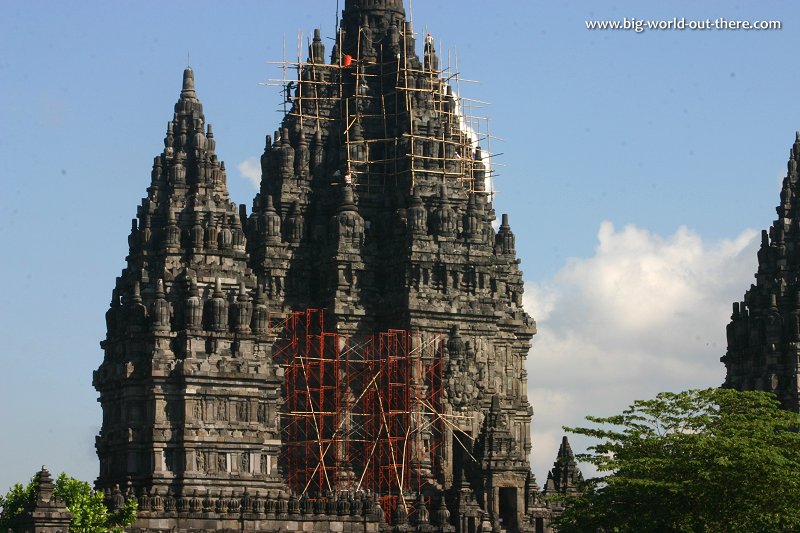 Restoration in progress on the main temple, the Candi Siva Mahadeva (22 June, 2004)
Restoration in progress on the main temple, the Candi Siva Mahadeva (22 June, 2004)
To the east of these three shrines, and facing them, are three smaller shrines. These are the temples of the celestial vehicles of the three aforementioned deities - nandi, the bull, for Siva; hamsa, the goose, for Brahma; and garuda, the sunbird, for Vishnu. In addition, there are two court temples which are located by the northern and southern gates.
Due to its east-facing orientation, Prambanan is best viewed on the morning part of the day, so that the rising sun can illuminate the front portion of the main temples.
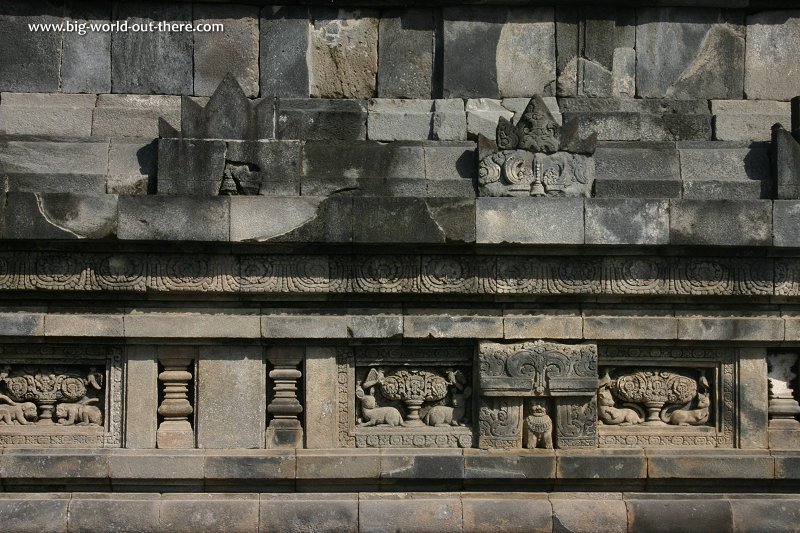 Exquisite carvings adorn the walls of the Prambanan temples. (22 June, 2004)
Exquisite carvings adorn the walls of the Prambanan temples. (22 June, 2004)
The largest shrine of the complex, the Candi Siva Mahadeva, is also known as Loro Jonggrang, a folk name that is often used to denote the entire temple complex. (That's because the name Prambanan refers also to the town in which the complex is located.) The name Loro Jonggrang means "slender maiden", and it is derived from a local legend which is "superimposed" on the ruins.
In the legend, a maiden, who happened to be a Javanese princess, was wooed by a suitor that she isn't interested. To win her hand, she gave him the Herculean task to build a thousand temples within one night. The man used magical powers to call on genies to help him with the task. So the genies started putting up temples in the night. However, she has no reason for him to succeed.
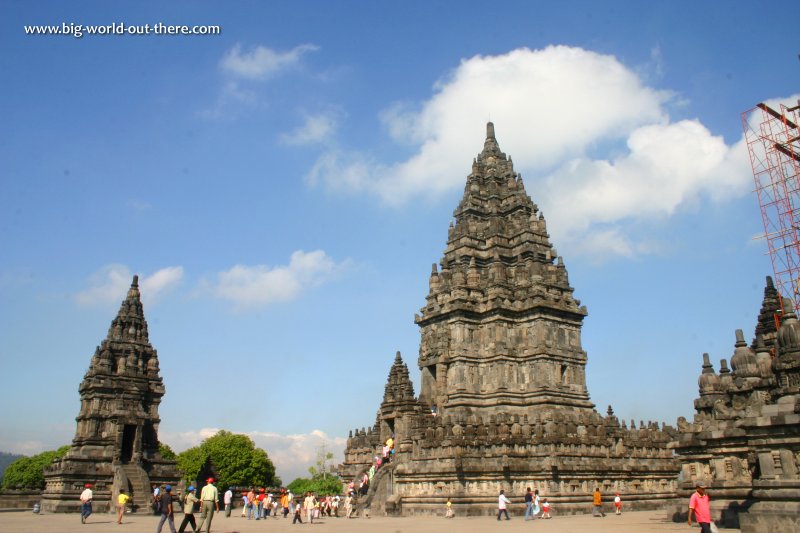 Visitors streaming into Candi Brahma, one of the main temples at Prambanan. To its left is the South Gate Shrine. (22 June, 2004)
Visitors streaming into Candi Brahma, one of the main temples at Prambanan. To its left is the South Gate Shrine. (22 June, 2004)
When it appeared certain that a thousand temples would be completed, she sabotaged him by pounding the rice mortar, confusing the genies into thinking that dawn is arriving, and causing them to flee. By then 999 temples had been built. Enraged by her action, the man built the final temple. And then he issued a curse on the maiden, which turned her into stone.
Local belief identify her as the statue in the northern chamber of the temple. What is interesting is that the statue identified as Loro Jonggrang is actually that of Durga, Siva's consort. Hence, the local people, who have long discarded Hinduism, have lost their understanding of it, and have reproduced their own tale to explain the figures within the Prambanan temple.
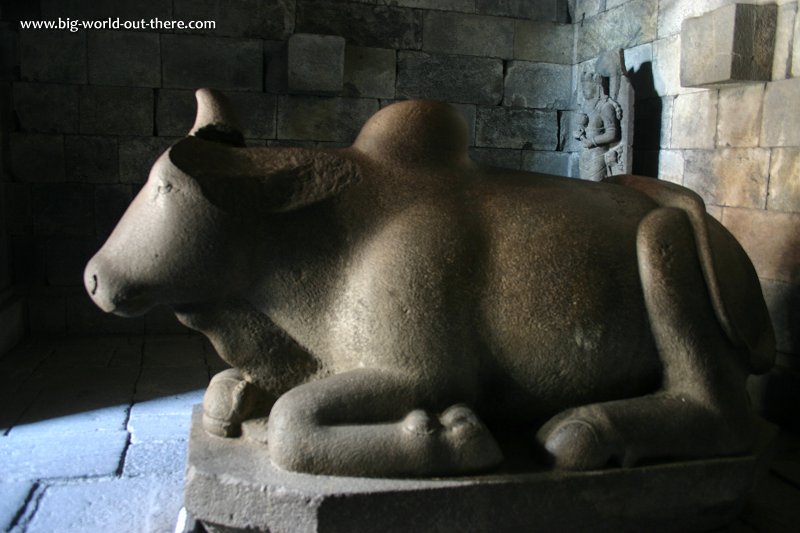 The statue of Nandi the bull, who is the celestial vehicle for the Hindu deity Siva. (22 June, 2004)
The statue of Nandi the bull, who is the celestial vehicle for the Hindu deity Siva. (22 June, 2004)
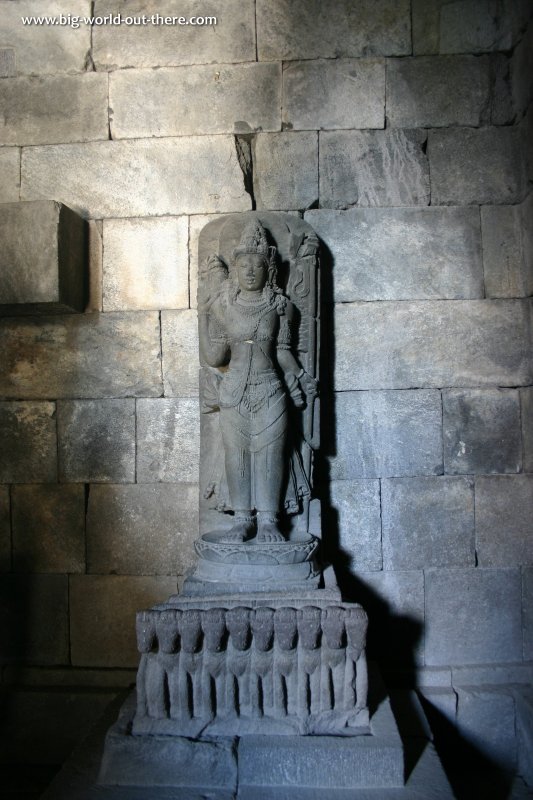 A statue within the Nandi shrine. (22 June, 2004)
A statue within the Nandi shrine. (22 June, 2004)
Just as with Borobudur, the Prambanan temple continues to inspire visitors with its mystical charm long after its builders were gone.
Update: June 2006
The Prambanan temple was affected by a massive earthquake that hit the Yogyakarta region in June 2006, and at time of update, is still closed to visitors.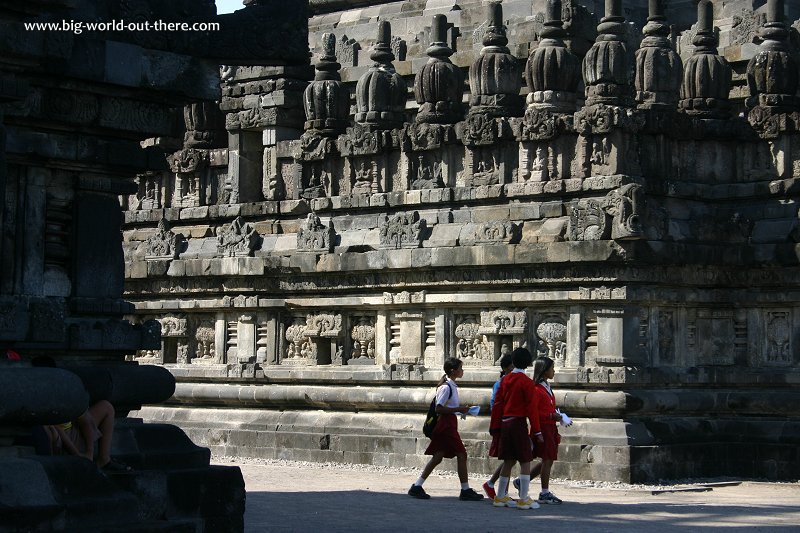 Indonesian school children visiting the temples of Loro Jonggrang at Prambanan. (22 June, 2004)
Indonesian school children visiting the temples of Loro Jonggrang at Prambanan. (22 June, 2004)
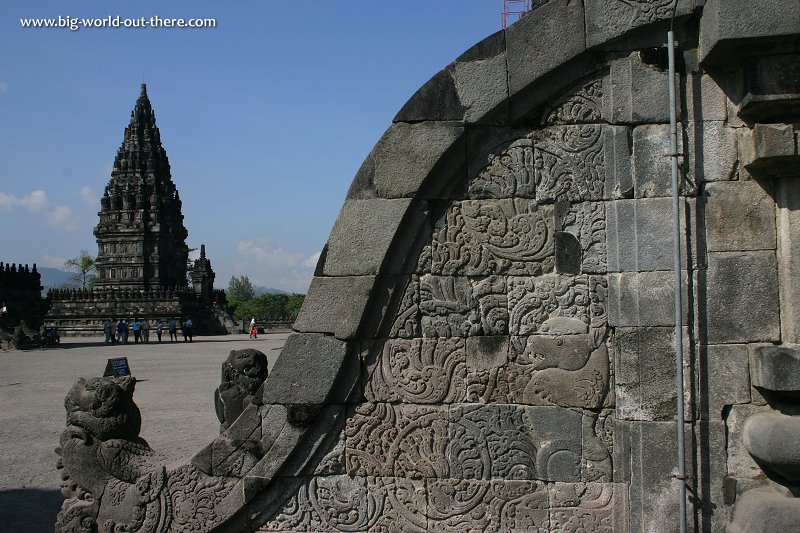 The intricacies of the carvings at Prambanan has been well restored and preserved. (22 June, 2004)
The intricacies of the carvings at Prambanan has been well restored and preserved. (22 June, 2004)
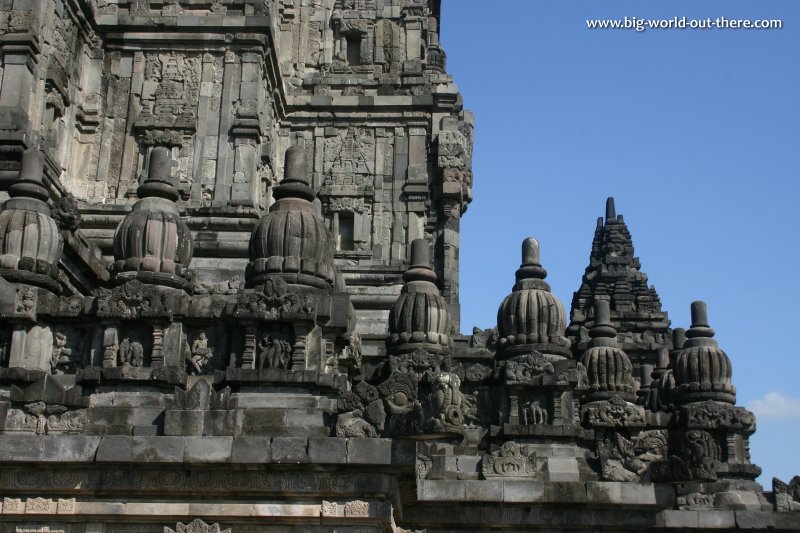 Details on the temples of Prambanan. (22 June, 2004)
Details on the temples of Prambanan. (22 June, 2004)
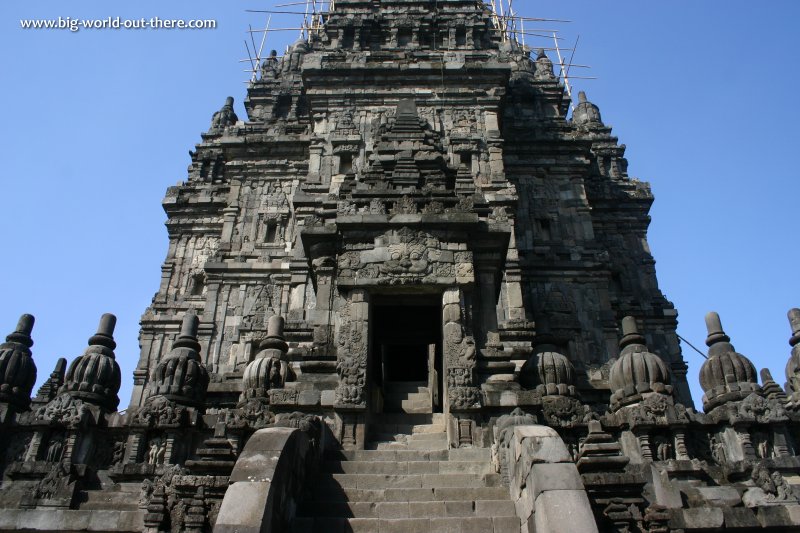 The motif on the lintel is very similar to those found in Angkor. (22 June, 2004)
The motif on the lintel is very similar to those found in Angkor. (22 June, 2004)
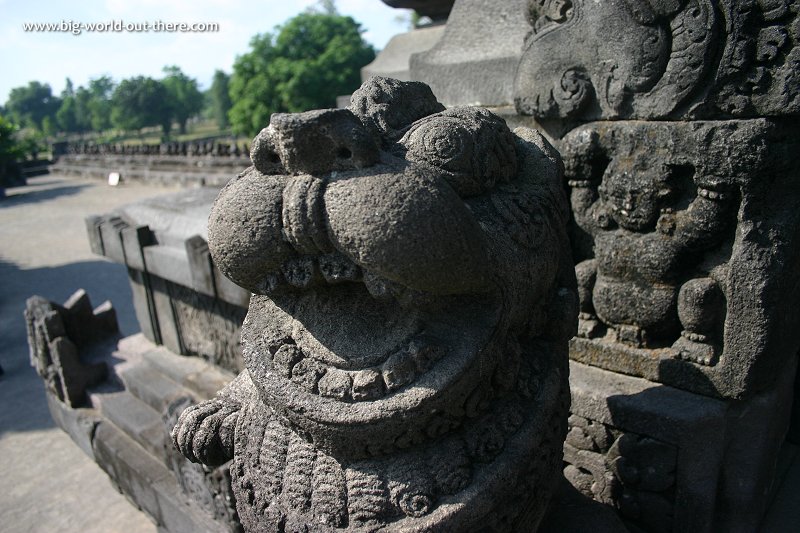 Details of a guardian lion at Prambanan. (22 June, 2004)
Details of a guardian lion at Prambanan. (22 June, 2004)
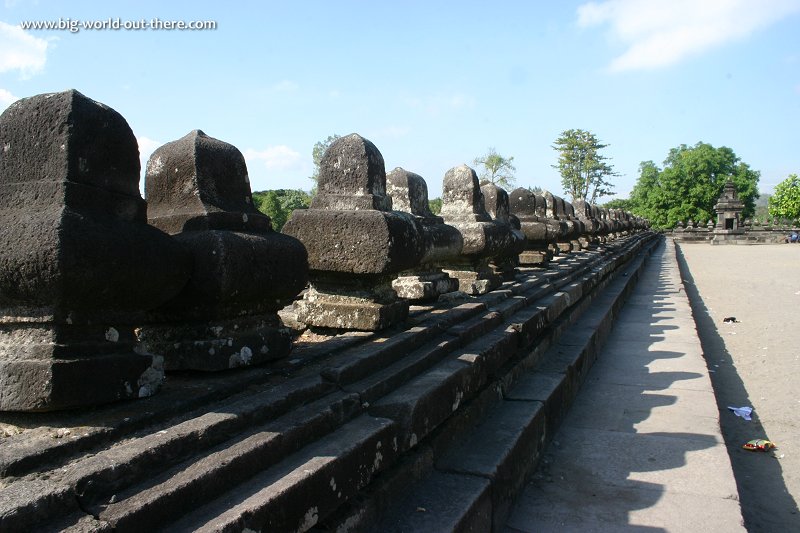 The stone terraces at Prambanan are also very similar to those at Angkor. (22 June, 2004)
The stone terraces at Prambanan are also very similar to those at Angkor. (22 June, 2004)
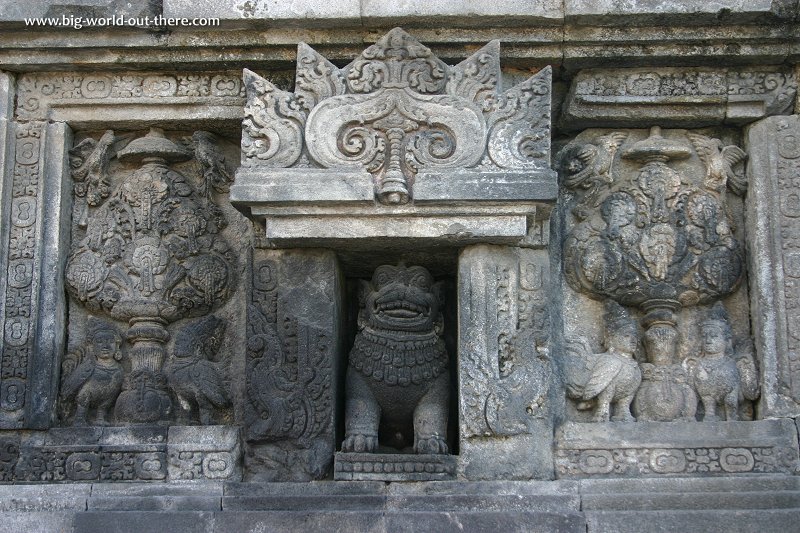 A lion, or some form of mystical beast, peeks from an alcove at Prambanan. (22 June, 2004)
A lion, or some form of mystical beast, peeks from an alcove at Prambanan. (22 June, 2004)
 Here I am at the temples of Loro Jonggrang, Prambanan. (22 June, 2004)
Here I am at the temples of Loro Jonggrang, Prambanan. (22 June, 2004)
 Latest updates on Penang Travel Tips
Latest updates on Penang Travel Tips
 Destination Indonesia
Destination Indonesia

Copyright © 2003-2025 Timothy Tye. All Rights Reserved.

 Go Back
Go Back